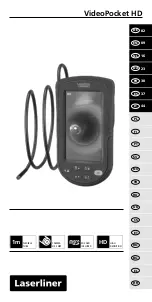
4
System requirements of NAV-LOC
8021386/12G4 /2019-04-24 | SICK
OPERATING INSTRUCTIONS | NAV-LOC
24
Subject to change without notice
4
System requirements of NAV-LOC
4.1
Requirements for the environment
The following requirements exist for using NAV-LOC:
The system is suited for navigation in closed buildings with even floors.
Walls, columns, and other fixed structures represented in the map must be sufficiently visible from
all positions in the building.
Installation of the components in the temperature range and with IP protection acc. to data sheet
Note: SICK Service can make a professional assessment of the factory site and then create the
map.
4.2
Requirements for the 2D LiDAR sensor
Ideal mounting is at a height above the heads of workers since typically only small changes of the
surroundings are expected here.
The sensor must be installed at a height which offers a good field of vision of the fixed elements of the
facility (for example walls, columns, fixed racks) from every location.
The sensor height should be above the height of movable objects.
NOTE
During installation, make sure that the visual range of the 2D LiDAR sensors is not restricted.
However, NAV-LOC is tolerant of individual movable objects protruding into the scan plane; this should
be the case only for a limited part of the scan data of the 2D LiDAR sensor for optimal accuracy at every
point. This means that 100% of the scan data does not necessarily have to match the map, but rather
that the system works even if the scan data deviates a bit from the contour, for example due to small
changes to the hall (e.g., single pallets or other vehicles) or covering by moving objects.
The sensor should not be installed at the height of wall projections or other objects, which can result
in ambiguity when measuring the distance to the wall. Instead, the sensor height should be selected
above or below the threshold so that it is clear which part of the building contour the sensor is meas-
uring.
See also the figure below:
The 2D LiDAR sensor should be installed according to the description in the operating instructions. It
should be possible to tilt the sensor mount in all directions in order to be able to align the sensor
horizontally so that the scan plane of the sensor runs parallel to the floor surface.
The sensor must be fixed to a vehicle on a way that the alignment of the sensor cannot be changed on
accident.
Ideally, the sensor alignment is done in an area with an even floor area intended for service work. As a
minimum requirement, an alignment should be carried out with a spirit level.
















































